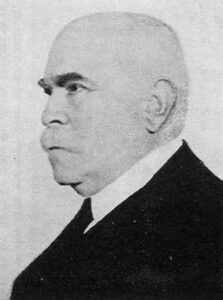In 1907, Dr. Paul Nathan, the founder of Ezra, toured the Land of Israel and visited the schools established by the organization. During the visit, he came up with the idea of establishing the “Technicum”, a high school for the study of technical professions. Paul Nathan was the one who decided on the location of the institution and managed to raise donations for the purchase of the land, building materials, and equipment.
The Aid Society of the Jews of Germany (in German: Hilfsverein der deutschen Juden, known as “Ezra”) was a non-Zionist German-Jewish organization that operated in the early 20th century for philanthropic assistance to the Jews of Eastern Europe and Israel and the promotion of German culture among Jews outside of Germany. It played a central role in the language war and the conflict that accompanied the establishment of the Technion in Haifa. The company was founded in Berlin in 1901 by Dr. Paul Nathan and was headed by James Simon (who was its president until 1932), Eugen Landau, and Max Warburg.
The establishment of the Technion was aimed at strengthening the technological sector in Palestine and the entire Turkish Empire. In addition, as a German patriot, Nathan wanted to serve the economic and technological needs of Germany. A board of trustees, called the Kuratoriam, was established, consisting of representatives of Wissotzky, “Ezra” and public figures, headed by Ahad Ha’am, Tschlenow and Schmaryahu Levin. The project was supported by donations from the American philanthropist Jacob Schiff, Ezra, Kalonymous Vysotsky’s estate, and many other donors. Additional donors contributed during the process of the establishment of the school. Feder claims that Dr. Nathan himself chose Haifa as the ideal location for the Technion, since it was a developing city without tension between religious and the secular communities as in Jerusalem, or in Tel Aviv. After a tedious inspection of Mount Carmel, he also selected the exact site where it would be built.
The building was erected and was supposed to open in 1913, but then the well-known language war began. The struggle was between Dr. Nathan and Wissotzky ‘s representatives, and Ahad Ha’am, Schmaryahu Levin, and Tschlenow. The latter insisted that the language of instruction be Hebrew, while the former wanted to introduce German as the official language of instruction at the Technion. Although Hebrew was the preferred language in Ezra’s other educational institutions, because of the need for technological terms, which were still missing in the Hebrew language, and due to a lack of teachers and textbooks in Hebrew – it was decided at the assembly in Berlin to teach the technological subjects in German, while Hebrew would be used for Hebrew-Jewish subjects. The three “Zionist” representatives – Ahad Ha’am, Schmaryahu Levin and Tschlenow – demanded that the language of instruction be Hebrew for all subjects, and when their demand was not met, they resigned in protest from the management of the Kuratoriam and called for a strike of all aid institutions in Jerusalem and Jaffa.
Paul Nathan hurried to Israel, and he suspended the striking teachers. In his memoirs he writes in sorrow that when he visited the schools the teachers and students pelted him with stones. A fierce controversy developed in Israel on the subject of the language of instruction at the Technion, which sabotaged the progress of the establishment of the institution and delayed further contributions to the project.

